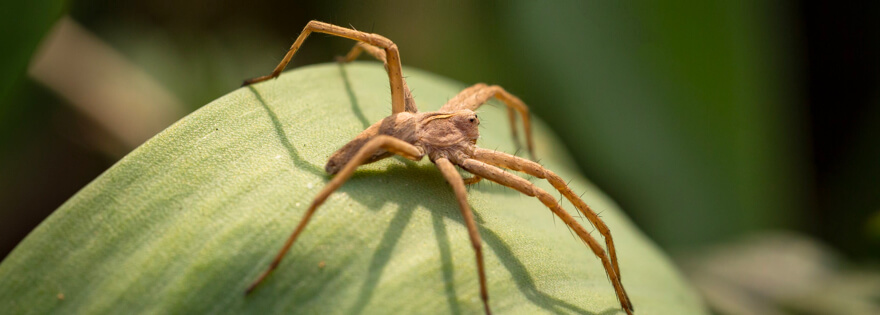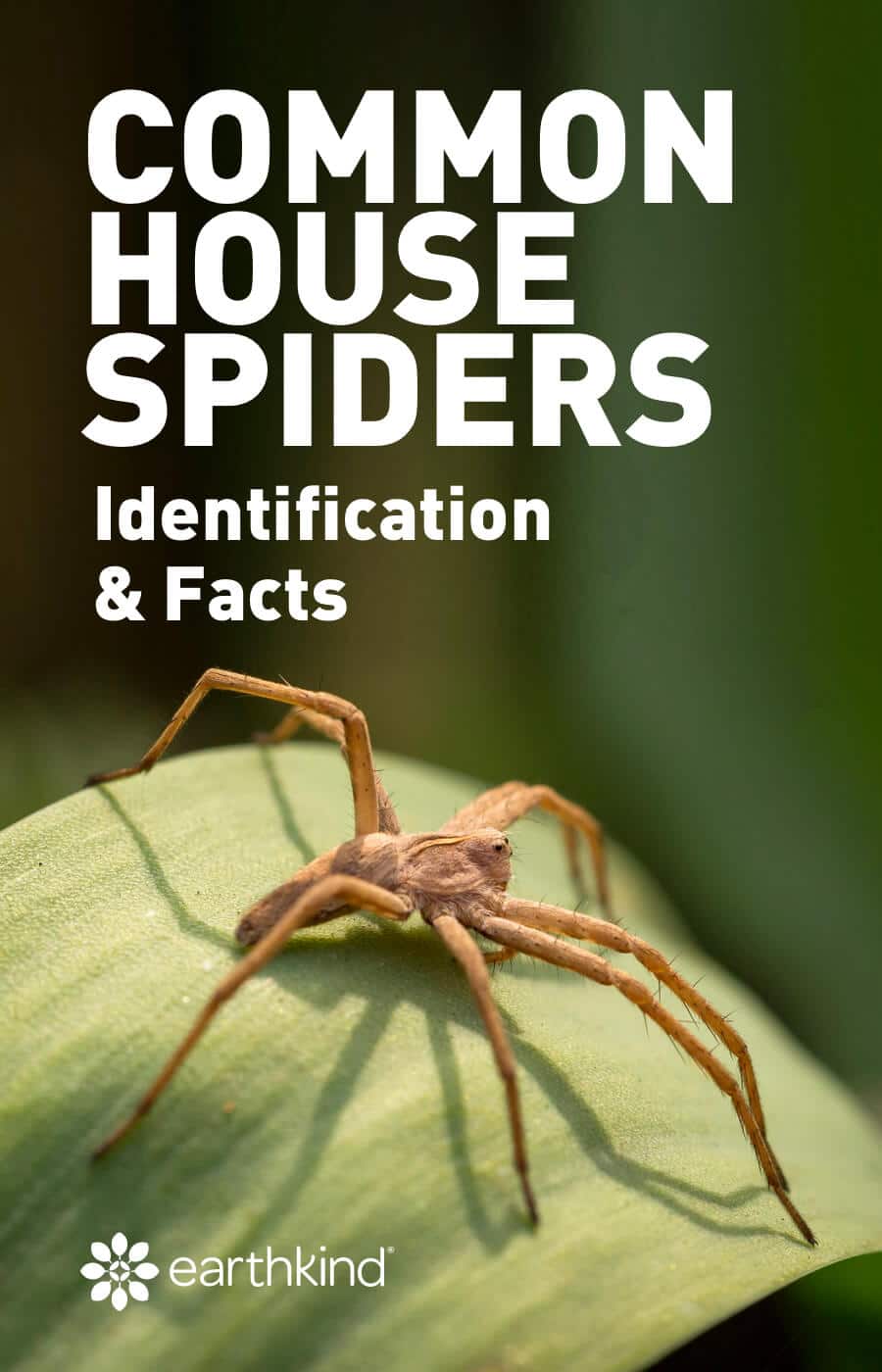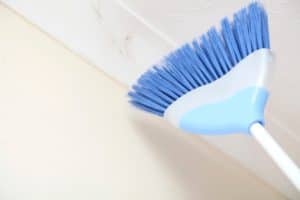Common House Spiders: Identification & Facts
By: Lisa Dingeman
Some of the most common types of spiders people will come across include the Yellow Sac Spider, Black House Spider, Brown House Spider, Barn Weaver, Hobo Spider, Cellar Spider/Daddy Long Legs, and the American House Spider.
If you’re anything like me, you can appreciate spiders from a distance, far from your home. I can admire those individuals who have no fear of arachnids, but I cannot tell you how many times one has fallen on me while sleeping, reading, walking into my garage, etc.
Those brave souls who have no fear of eight-legged intruders will never know the anxiety felt each time you shake out a blanket before crawling into bed or banging your shoe on the floor before putting it on, you know, just in case.
Fortunately, for those of you like myself, there is hope. The more information we can gather about spiders, the less scary they seem. It’s beneficial to learn about the different types of spiders, tips for identifying house spiders, and learning which ones are harmless or dangerous. You might be surprised to find out that they can even benefit us!
Types of Common House Spiders
- Yellow Sac Spider (Cheiracanthium inclusum)
- Black House Spider (Badumna insignis) A.K.A. Grey House Spider
- Brown House Spider (Steatoda grossa) A.K.A. Cupboard Spider
- Domestic House Spider (Tegenaria domestica) A.K.A. Barn Weaver
- Hobo Spider (Tegenaria agrestis) A.K.A. Aggressive House Spider
- Common Cellar Spider (Pholcus phalangioides) A.K.A. Daddy Long Legs
- Common House Spider (Parasteatoda tepidariorum) A.K.A. American House Spider
There are many different kinds of spiders found in homes throughout the world. In the United States, two out of three households have infestations. For the most part, they are considered harmless unless provoked. If bitten, the venom is usually not damaging enough to cause us permanent harm.
Here are the most common types of house spiders and how to identify a spider based on their unique qualities.
Yellow Sac Spider
– Cheiracanthiuminclusum – is found worldwide. They are of little threat to humans and can be found taking refuge during cold months in your home. You may spot them hiding in self-made silken sacs in corners along the floor or along the wall which meets the ceiling. They are about ¼ inch long with a yellow/green coloration and a spherical body.
Black House Spider
– Badumna insignis – A.K.A. Grey House Spider – is found throughout Australia and New Zealand. Although the Black House Spider is venomous, it is not considered dangerous to humans. In your home, they can be found anywhere that their prey may be, such as corners, windows, or near bright lights. They are dark in color and can grow to 1 ¼ inch leg span.
Brown House Spider
– Steatoda grossa – A.K.A. Cupboard Spider – is found worldwide. Spider bites from one of these can cause blistering, fever, and muscle spasms for several days, but most likely won’t need professional treatment. They construct webs and depend mostly on vibrations due to lack of eyesight. A female Brown House is very different in appearance from the male in that she has a wide, circular body, dark brown in color, and is regularly mistaken for the Black Widow spider. The female reaches 6-10 mm in length, while the male gets 4-10mm in length and is thinner than its counterpart.
Domestic House Spider
– Tegenaria domestica – A.K.A. Barn Weaver – is found worldwide. They are of no harm to humans and build their webs around window sills or corners. They prefer dark areas as they are sensitive to light so you’re likely to find them in basements, crawl spaces, and attics. Domestic House Spiders have long bodies that are flattened and straight. Females range from 7.5-11.5 mm and males from 6-9 mm in length.
 Hobo Spider
Hobo Spider
– Tegenaria agrestis – A.K.A. Aggressive House Spider – is found worldwide. The bite from this type has often been mistaken for the bite of deadly Brown Recluse spiders, which has given the Hobo a bad reputation for being aggressive and dangerous. They will enter your home only if there is no threat to them from other spiders. They are light brown, narrow-bodied, and measure anywhere from 11-14 mm.
Common Cellar Spider
– Pholcus phalangioides – A.K.A. Daddy Long Legs – is found in most of the world. Because they cannot survive in colder climates, they will seek out your house in colder regions. There is a long-running myth about the bite and venom of a Daddy Long Legs that they are the most venomous spiders in the world, but do not have long enough fangs to penetrate human skin. Both claims have been disproven. A biter will cause mild burning and the venom has been proven to be harmless to humans and small animals. The body is small and oval in shape, tan in color, and its legs can measure up to 4 inches long.
Common House Spider
– Parasteatoda tepidariorum – A.K.A. American House Spider – is found worldwide and is the most commonly seen type in homes. They are no threat to humans and will normally let your hand approach them. They can be found weaving spider webs under window sills and in wall corners. Common House Spiders are a dull brown in color and the average body size is 6 mm long and can measure longer than an inch with leg span.
Keep your home pest free with simple, effective solutions. Subscribe and save!
These Pests Can be Beneficial
There are many benefits that spiders provide to your home, the environment, and the ecosystem as a whole, doing us all a favor—really.
- They eat common indoor pests such as roaches, mosquitoes, flies, fleas, moths, and bed bugs! Because of their eating habits, they help prevent diseases that can be spread by these pests.
- They eat bugs and other pests that are extremely harmful to our croplands—in fact, spider expert Norman Platnick says there would be a famine without them controlling the insect population.
- Spider venom has become valuable in medical studies. Scientific tests have shown potential in neurological disorders, epileptic seizures, strokes, pain control, and erectile dysfunction with the use of certain venoms.
It can be really useful to learn how to identify spiders that are good for your home so that you keep them around for their benefits. Our house spider identification tips can also be great to help you find harmful spiders that you want to get rid of ASAP!
Keeping Them Out of Your Home
Understanding more about the types and species of spiders you’re dealing with can help with getting rid of them in your home and preventing them from returning.
Now that you are well versed in the most common household spiders, it is time to get them out of your home—if you so desire. The 3 steps listed below will help make your home a less ideal space for these pests to choose as their home:
Clean
– Vacuuming up dust bunnies, old cobwebs, and wiping up dusty areas will eliminate the risk of bugs and pests, thus eliminating the risk of spiders. No food supply, no predator. They will have no need to come around—unless seeking warmth.
Seal
– By sealing up any openings that can pose a potential entry for spiders, you will prevent them from gaining entrance. Cracks in foundations, doors, windows, etc. provide easy access into your home.
Protect
– Protect your home with the pleasant scent of our spider pest-control product, Stay Away® Spiders. Not only will you enjoy the air-freshener-like scent, but you will also prevent your inside property from a spider infestation. The legs of a spider are highly sensitive and are used for hearing, feeling, and smelling. The ingredients found in Stay Away® interferes with these and disrupts its senses causing it to run for the hills—or just back outside. The combined scent of citronella, lemongrass, and rosemary also helps repel various types of prey, leaving your home pest-free.






 Hobo Spider
Hobo Spider


I was bitten by a spider at night. I saw the bite mark in the morning. It did not itch. It was circular, puffed up, about 1/2 of an Inch wide. It left a hard knot-like area underneath the skin. Now, almost two weeks later, the area is rough, and I can still feel the hard area below it, and the color is still dark purple. Do you have any idea of what spider this was? Montana has black widows, brown recluse,and Hobos as well as others. Any information about this spider would be greatly appreciated. Thank you. Pat.
Hi Pat,
Sorry to hear about your bite! It’s difficult to guess what kind of spider (or possibly a different insect) is responsible for the mark you are describing. You may be able to call a nurse hotline for more help. Make sure to contact a medical professional if you experience fever, dizziness, nausea or difficulty breathing. In the future, consider keeping a pouch of Stay Away Spiders in your bedroom to keep this from happening again.
Thanks for reading!
I live on a horse farm in the middle of the woods in pinebush ny…this is about 2 hours north of NYC but it’s a different world….my apartment was built in 1825 and the last tenent and the landlord has not kept up with the place at all. Shame cuz it could be nice…ever since we moved in last summer I’ve been begging for it to be sealed….it needs concrete poured outside and all this stuff so spiders literally have a perfect entrance….im already afraid of spiders but living with them sometimes seeing up to 8 A day in my house….they are the really big wolf spiders and we did see a couple brown recluse…my husband got bit by one 6 years ago so they are definitely around…im now 3 months pregnant and terrified. God forbid I get bit by something while pregnant….it wouldn’t be good…we have little cracks to seal which can be done with some caulking but I’m on the verge of a nervous breakdown…we also get a disgusting amount of flies in the hot weather which the spiders love to eat..my landlord isn’t taking me seriously like this is something to laugh about….i see them most at night and when it rains they come in…as soon as the weather turned cold last year I saw noooo spiders all winter up until a couple weeks ago…i need some natural yet effective ways to get them put since I’m pregnant or I’m going to be out..please help me
Hi there!
That sounds like an amazing place, but understandably stressful to see spiders in your house, especially when you’re pregnant. Stay Away Spiders is a botanical spider repellent, so there are no harmful chemicals to worry about — it just makes the spiders stay away. Sign up for our newsletters to get an introductory discount, and special offers each month so your home stays pest free.
Thanks for reading!
Needed this for an essay thanks!
Hi Bobby,
You are very welcome! I’d love to know how the essay turned out! Follow us on social media and let us know 🙂
Have a great day!
I left a few black widows alone that I found around the house. Is that ok?
Hello Eric,
We do not recommend allowing black widows to roam around your home. While we favor repelling spiders over killing them, black widows merit extra caution since an adult female widow does have a venomous bite. EarthKind’s Stay Away Spiders uses the scent of botanical oils to repel spiders and the insects they eat. Since spiders (and their prey) rely on scent cues to find food, identify potential mates and detect danger, they will avoid areas treated with Stay Away. Pest activity should decrease in treated areas within 24 hours after placing the repellent pouches, eventually causing spiders to stay away from the area altogether.
Here is an article you may find helpful as well: Black Widow Control and Prevention
Thank you for reading!
Mildred
I dont know what that is but i may have encountered the same type of spider on the outside ridge on my shed 5 years ok it scared the freaking crap out of me so i had a praying mantis and i asked my dad to come out and catch the spider in the same jar as i had my praying mantis and that same spider was no more with the mantis
Hi J’Won,
Putting a spider with a praying mantis certainly sounds like one form of natural pest control!
Thanks for reading!
Still have no idea as to what kind of spiders are in my home; but I now know how to possibly prevent them.
Hi Danita,
Spider identification can be tricky! We’d love to see pictures if you have any, share with us on Facebook or Instagram by tagging @earthkindinc.
Thanks for reading!
I have a spider in my shed it is about the size of small finger nail it’s colour is brownish the segments of the legs look like black dots the body has like an orange colour with a white line running down its back I notice it curls up in a ball upside down and you would not think it was a spider if you try to touch it it true to attack if anyone knows what type of spider this is I would appreciate it thanks Stuart
How interesting! Perhaps a local Ag Extension office could help you identify the spider? Thanks for reading!
The “Daddy Long Legs” is actually what belongs to the Order Opiliones, not Aranae. It is not a spider, but rather a harvestmen. One of the best ways to tell is by looking at the body and realizing that it does not have any sort of separation between the body as a true arachnid does. A harvestmen just has one “body”. However, the Pholcus phalangioides, or Longbodied cellar spider, or Skull Spider, is in fact an arachnid.
Great info, thanks for the comment!